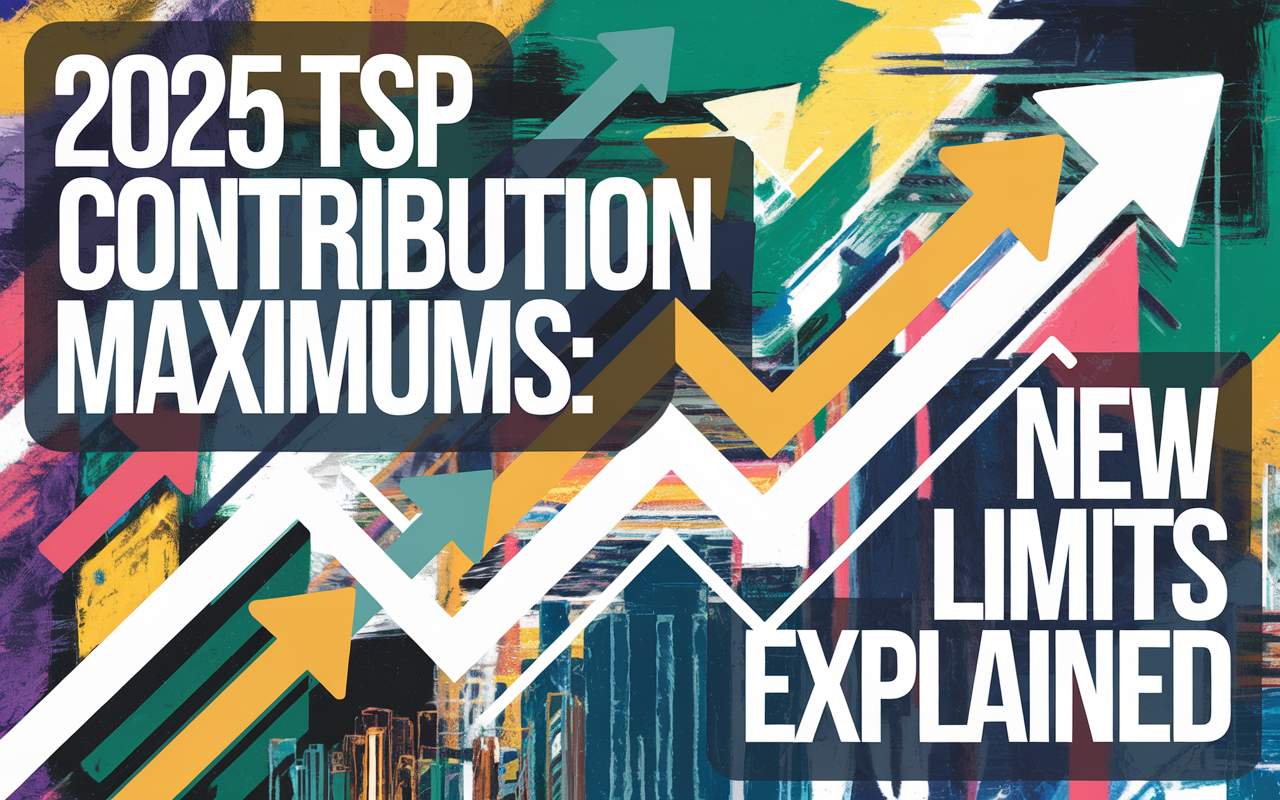2025 TSP Contribution Maximums: New Limits Explained
The dawn of 2025 brings with it changes to the Thrift Savings Plan (TSP) contribution limits—a move that holds substantial promise for federal employees keen on enhancing their retirement savings. These adjustments are not just numbers on a page; they represent a calculated opportunity for those looking to secure a more financially stable future. Navigating these changes requires understanding the new thresholds and how they can be leveraged for potential benefit. For additional strategies on investing within TSP, be sure to explore our TSP & Investing resource.
Understanding the Standard Employee Contribution Limit
For 2025, federal employees under the age of 50 can contribute up to $23,500 to their TSP accounts, marking a modest increase from the 2024 limit of $23,000. Though it may not seem dramatic, this increment remains significant in the realm of compounded growth over many years. Assessing the growth trend over the past decades reveals a steady climb in allowable contribution limits, a testament to inflation adjustments and growing acknowledgment of the need for better retirement preparation.
| Year | Standard Contribution Limit | Catch-Up Contribution Limit |
|---|---|---|
| 2023 | $22,500 | $7,500 |
| 2024 | $23,000 | $7,500 |
| 2025 | $23,500 | $7,500 / $11,250* |
*Special catch-up for ages 60-63
To make the most of this increment, federal employees should ensure that their contribution rates are adjusted accordingly in systems like myPay. This can be done by entering an appropriate per-pay-period election to distribute contributions evenly throughout the year, aiming to hit the annual limit efficiently without affecting cash flow significantly during individual pay periods.
Exploring Catch-Up Contributions and Their Benefits
Catching up on retirement savings is a pivotal strategy for employees aged 50 and older. For the year 2025, those aged 50–59 and 64 and over can make an additional $7,500 in catch-up contributions, bringing their total to $31,000. Meanwhile, those in the age bracket 60–63 can contribute an extra $11,250, allowing them a total of $34,750. This enhanced limit is a direct result of the Secure Act 2.0, designed specifically to bolster savings among those nearing retirement age, acknowledging the larger financial responsibilities they may have, such as post-retirement healthcare or even helping adult children.
| Age Group | Standard Contribution | Catch-Up Contribution | Total Contribution Limit |
|---|---|---|---|
| Under 50 | $23,500 | $0 | $23,500 |
| 50 to 59 | $23,500 | $7,500 | $31,000 |
| 60 to 63 | $23,500 | $11,250 | $34,750 |
| 64 and older | $23,500 | $7,500 | $31,000 |
Understanding these contributions is crucial not just for maximizing potential savings, but also for taking full advantage of any employer matching funds that may be available. Mismanagement here could result in the loss of these benefits once the catch-up limits are reached unnecessarily early in the year.
Navigating Spillover Contributions
One of the most user-friendly features of TSP contributions is the spillover system that automatically reallocates excess contributions to catch-up funds once standard limits are met. This simplifies the process for employees, ensuring that contributions intended for catch-up purposes don’t inadvertently exceed limits and lead to potential penalties or missed opportunities for tax-advantaged growth. This system works in harmony with payroll systems, redirecting contributions seamlessly and ensuring continued compliance.
Do Not Max Out Too Soon!
Ensure you maximize your Thrift Savings Plan (TSP) contributions across all your pay periods in the year, typically 26. It’s crucial not to hit the maximum contribution limit too early, risking missing out on TSP matching funds. Divide the maximum contribution limits of $23,500 or $31,000 by the number of pay periods you have. For instance, reaching the max by June 1st means forfeiting half of the year’s potential match (2%). Repeating this error throughout your federal career could result in significant financial loss, potentially totaling tens of thousands of dollars.
If you are on 26 pay periods:
- $903 per pay period for $23,500
- $1,192 per pay period for $31,000
To learn more about mistakes to avoid when contributing, check out our guide on common TSP misconceptions and mistakes.
Key Considerations Heading into 2025
Age can be more than just a number when it comes to retirement savings strategy. It’s critical for employees on the cusp of milestone birthdays in 2025 to consult with their financial advisor for federal employees or HR departments early in the year to tailor a plan that aligns contribution limits with income streams and government matching policies. For instance, those aligning themselves for a major limit increase due to an upcoming 60th birthday should plan for larger contributions while ensuring they do not engage in unnecessary adjustments that could disrupt financial stability through the year.
Historical and Future Perspectives
The progressive adjustments seen in TSP contribution limits over years past reflect a response to economic inflationary pressures and the evolving understanding of retirement needs among the federal workforce. Since 2013, the standard TSP contribution limit has risen by over 34%, with a significant portion of this change happening since 2021. While the future remains speculative, trends indicate modest increases aligned with inflation are likely, safeguarding employees against the eroding power of a static dollar.
Conclusion
The 2025 financial landscape for TSP contributions presents both challenges and potential opportunities for federal employees. Being proactive in understanding these limits and wisely adjusting contributions can significantly impact the financial health of retirees. It is always beneficial to seek further personalized advice through dedicated resources. Our team of Chartered Federal Employee Benefits Consultants (ChFEBC), CERTIFIED FINANCIAL PLANNER™ professionals (CFP®), and Accredited Investment Fiduciaries (AIF) is here to help you navigate these changes. We invite you to sign up for one of our free Federal Retirement Planning Workshops and FERS webinars.










